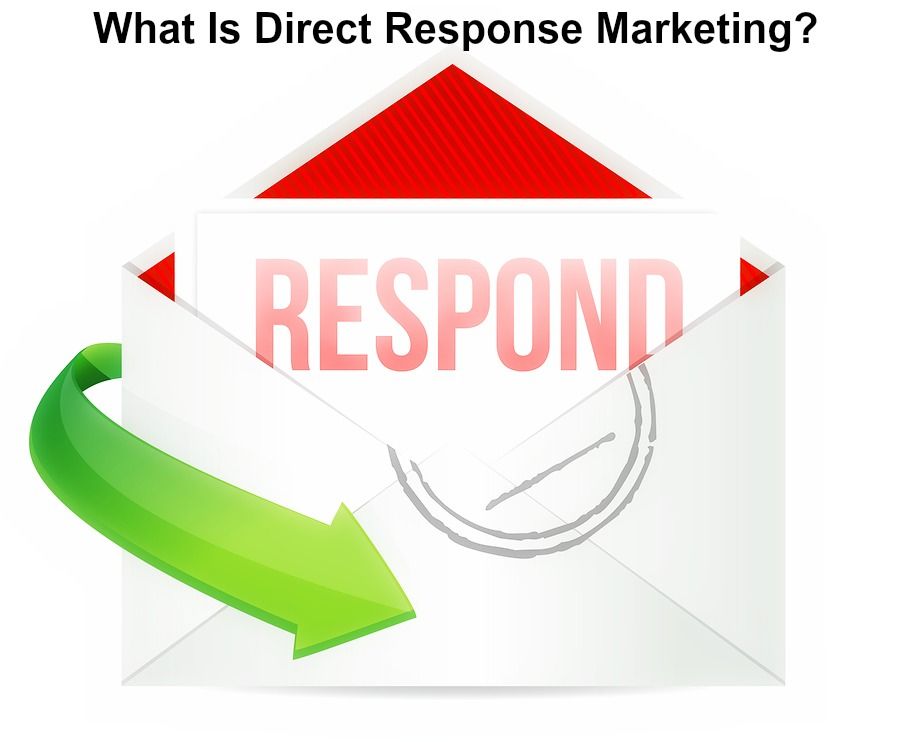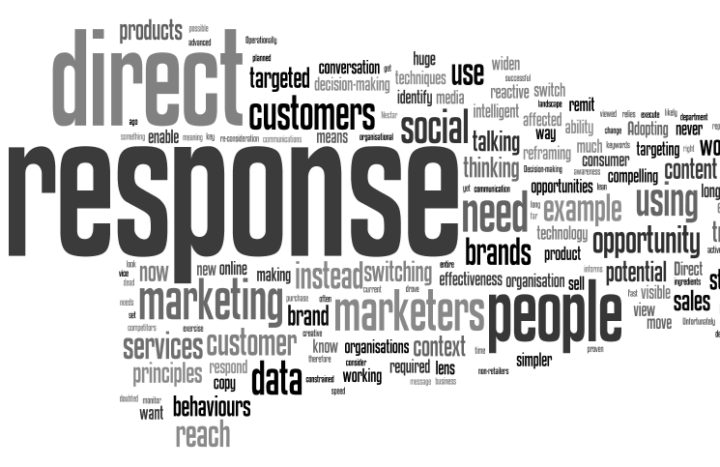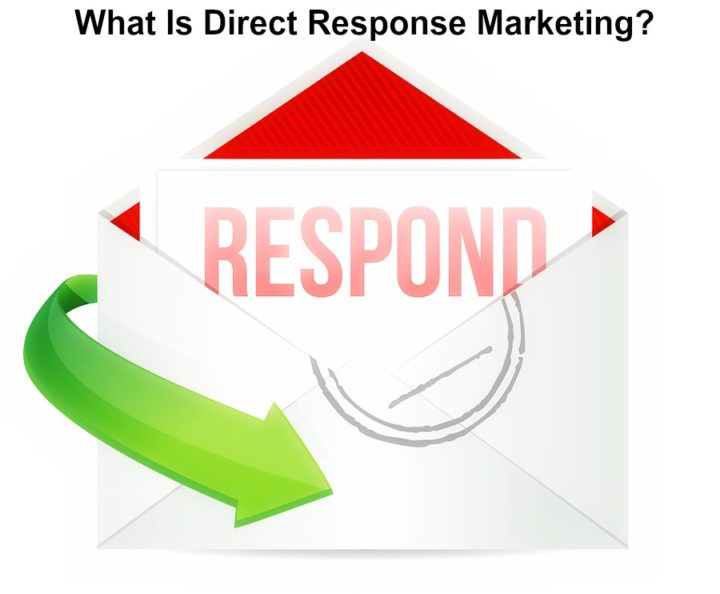Direct Response Marketing – E-Commerce Social Media Solutions


As a small business owner, you may be familiar with several different kinds of marketing techniques. We have seen plenty of brands and their trademarks, and we’ve heard all kinds of catchphrases, slogans, and jingles. Some of them work, while others have yet to convert into something meaningful.
The most effective marketing you should use in your e-commerce strategy is direct response marketing. This type of marketing is designed to elicit a response from your customers that is immediate, measurable, and directly attributable to a specific action on their part.
Image marketing is what most of us think about when it comes to marketing. The goal of image marketers is to increase brand awareness by reminding consumers of their existence. Advertisements work to embed the brand or product into the consciousness of the consumers, leading to sales. However, it is hard to measure the effect of these advertisements, since the desired response is not immediate.
Look at the commercials on mass media channels: lizards are selling Geico car insurance, professional athletes sell shoes, and polar bears move gallons of Coca-Cola every holiday season. These images work their way into our consciousness because of repetition. Ad space on TV costs millions of dollars. For small businesses, trying this approach is an unrealistic endeavor even if they had a multimillion-dollar marketing budget.
Even though the Victoria Secret models look great on TV during the runway show, your next purchase from VS might have happened whether you were watching or not.
Direct response marketing is more appropriate for small business owners, as we shall see below.

What direct response marketing does is facilitating an immediate call to action on the part of the receiver of the message. This feedback is then measured and interpreted. Marketers can use the response to understand how their products are performing, based on the strength of the respondents’ feedback.
Once again, the immediacy of the response is what makes direct response marketing unique.
Direct response marketing is everywhere. It can be delivered through traditional media such as print ads, postal mail, television, radio, and catalogs. Telemarketing and Internet advertising are also mediums that can be used, especially in e-commerce to conduct this type of marketing. The key elements to direct response marketing include a proposal, information for the customer to process, a call to action, and provisions for the recipient of the message to give their feedback, such as a toll-free number, web page, or email address.
The Internet has emerged as the premier medium for direct response marketing, simply because it is very interactive, and the immediate effects of direct response marketing can be quantified. Viewers of your ad can respond to your ad by simply following a link, sharing or clicking on “Like.” Whatever your definition of a response, thanks to social media, the whole process of direct response marketing has become very streamlined.
Direct response marketing will only become more open to integrating many platforms of social media, such as Twitter, Google+, Facebook, LinkedIn, Instagram, YouTube, social media messaging apps, where prospective users can interact with brands in conversational commerce.

To use direct response marketing effectively, let these tips be your guide:
1. Identify your target audience.
You need to identify your target audience and generate a meaningful mailing list of prospective clients, not just followers. This means blog subscribers, Twitter or Tumblr followers, or Facebook fans. The people on this list should be willing to read whatever you put in front of their eyes, and are interested in your product and service enough to want it for themselves.
Whether you compiled this list through social media or other means of getting leads, the importance of quality cannot be stressed enough.
Direct response marketing means that your customer base is comprised of the people that are on your list of prospects, and that they are engaged and looking to actually spend money with you. Having several hundred thousand freeloaders is nowhere near as valuable as having only a few hundred keen prospects. The more dedicated and interested they are in your products and services, the higher your response rates are, and the more likely they will pay for them.
2. Use compelling headline
According to org, a compelling headline is what sells the content. More than eighty percent of readers only get as far as reading the headline, and never finish reading the body of your content. Therefore, use strong headlines in your message. Tell your prospective customers what you can do for them, and why they should care.
Readers are always looking to answer one very important question in the body of your content: “How can the product you are selling benefit them?” Your headline should focus on answering this question as extensively and explicitly as possible. Once they see a reason to continue reading, they will do so with enthusiasm.
Go back over your headlines and re-read them as standalone statements. If they leave you asking “So what?” then you need to make them much stronger.
3. Measure conversions
Your message and your marketing techniques need to result in measurable units of conversion. This can mean opt-ins, shares, or sales. If you can not measure your success, how do you know if you are really succeeding?
The whole point of advertising is to sell, because sales are the end goal of all marketing efforts, whether it is image marketing or direct response marketing. Social media platforms provide a wide range of tools to help you measure conversion, but you must keep this in perspective. “Impressions,” “likes,” and “clicks” do not pay the bills to keep the lights on, so pay close attention to your tracking from beginning to end, even down to the small, yet quantifiable, pieces of data.
4. Make compelling content
Try to make your content compelling. The attention spans of most people on the Internet are short when it comes to content they do not care about, but they will make time for something that really resonates with them. Learning the basics of typography will help a lot!
Identify and establish yourself as a provider of solutions, and be clear as to what problems your products and services solve. Prospective clients may be wary about salespeople, whether online or in the physical world. Review your content to see if you are making a point, or just wasting their time.
5. Use conversational tone
Present your ideas in a conversational tone. Let your audience tune in. They will be turned off by anything pretentious or too formal.
Have some respect for your audience. Do not include corporate jargon, esoteric catchphrases or technical terms in an attempt to impress. Read over your body content and see whether it has an emotional effect in addition to what the words themselves say.
The more impressive and important your writing sounds to you, the more likely you will turn off your prospective clients. They could not care less about your vocabulary: all they really want to know is whether they can benefit from what you have to offer.
6. Show your product
Show, do not tell. Your product should sell itself, so show your audience how awesome it is.
Despite how convinced you may be of the effectiveness of your products and services, you have a whole list of people who need convincing. Here is where a wall of text would not do you any favors. Try implementing case studies, illustrations, demonstration and tutorial videos, and before and after photos. Sometimes these techniques are more effective at showing prospective clients how things work.
7. Call to action should ask for a response
Your call to action should ask for a response. If you have something to offer, make it clear and tangible.
When you make your call to action, prospective clientele must be compelled to respond, and you need to have a means of recording and documenting the response. Wherever possible, implement ways for your prospects to respond that allow for follow-up contact beyond the initial response, such as a regular phone number, personal email address, or other tangible means to get in contact.
8. Offer your audience something that they want
Offer your audience something that they want. Reward their action by over-delivering on your promises.
Sometimes this entails some rethinking on your part about how to approach your audience. For example, offering a free gift, or a second item for free at no extra risk on the part of your prospect can really mean the difference between a conversion and a failed attempt at a sale.
9. Test your ideas
Test your ideas, gather feedbacks and track your progress. You will learn from your mistakes and from your audience.
Testing can take up to a few weeks to gather data and the context with which to analyze it. However, there are a few tools that allow you to get results faster. Web-based email tools are a great example of this. Using two different email headlines on different segments of your mailing list helps you gauge the responses from your audience, sometimes even providing you with the detailed analysis of your direct response marketing campaign.
Listen to your prospect’s opinions. After you get their attention and they have shown interest in your products or services, gathering feedback from them is one of the most important strategies in Marketing. They may be able to offer better suggestions or solutions that will aid you in your campaign and eventually lead to a conversion or sale.
Small businesses thrive on actual relationships, and whether you sell your products in the physical world or in a fledgling online store, building connections and rapport will invariably lead to success. Direct response marketing allows you to separate your successful marketing efforts from those that don’t work. You’ll be able to target your prospective customers, addressing their needs in a focused, strategic manner.
You are not still beating around the bush with your marketing, are you? Let us know by leaving a comment below.

